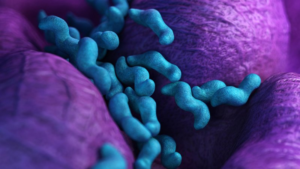Our related Courses
There are many hazards related to food safety, which could be biological, chemical, physical or allergenic. These hazards can affect the health of those who consume contaminated food, and therefore hazards must be identified and reduced as far as possible during the food production journey. The Hazard Analysis Critical Control Point principles help food businesses to prevent various hazards from occurring to ensure health and safety standards are maintained throughout food production.
The Hazard Analysis Critical Control Point (HACCP)
The HACCP principles are a preventative approach to food safety and encourage food businesses to assess biological, chemical, physical and allergenic hazards which could affect food safety. The HACCP principles require food businesses to revise current procedures and to conduct hazard analysis, in order to identify critical control points. As a result of the emphasis which the HACCP principles have placed on preventing hazards from occurring, it has helped to reduce the amount of food poisoning and foodborne illnesses which occur due to poor food safety.
What types of food hazards are there?
Biological Hazards
Microorganisms, such as bacteria and viruses, contaminate food and produce serious toxins on the food, which lead to unpleasant illnesses. Microorganisms transfer onto food from unclean hands, unclean clothes, pests, animals and the air.
Microorganisms thrive within particular temperatures, pH levels and moisture, and therefore there are a number of microorganisms which are able to multiply when in ideal growth conditions. There is a ‘Danger Zone’ which allows microorganisms to grow rapidly. This zone refers to temperatures between 8°C and 60°C. When in the ‘Danger Zone’ bacteria can double in number every 20 minutes, and it has been suggested that after four hours the number of bacteria is high enough to cause serious illness.

Below the temperature of 8°C, the growth of bacteria is slowed down and essentially paused, and when food is above the temperature of 60°C, bacteria dies. Therefore, when cooking food, the food must reach a core temperature of 75°C to ensure all bacteria is killed. Moreover, if you are storing food in chilled conditions, foods must be kept between the temperature of 0°C and 5°C. Refrigerators should be set at 3°C or 4°C.
Examples of biological microorganisms include:
- Salmonella
- Campylobacter
- E. Coli
- Listeria
- Norovirus
Chemical Hazards
Chemical substances can transfer onto food and contaminate it. Chemical substances include mycotoxins, sodium nitrate, pesticides, kitchen cleaning products and pest control products.
To avoid chemical hazards, ensure that cleaning procedures and sanitation in the workplace is of a high standard. You must also be aware of how your food has been treated previously, such as whether the food has come into contact with pesticides. It is also important to ensure chemicals in the workplace are stored separately from food products.
Physical Hazards
Physical hazards involve physical foreign objects coming into contact with food, such as plasters, glass, plastic and hair.
To avoid physical hazards, ensure that those handling foods have a high standard of personal hygiene and are dressed appropriately. Therefore, hair must be tied back, no jewellery on, gloves on, and if a plaster is being worn, it must be a bright blue plaster to ensure it is visible. If anything is dropped or smashed around food, for example glass or plastic, the food must be thrown away to ensure no fractures of glass or plastic are within the food.
Allergenic Hazards
Allergic reactions occur when a particular food enters the human digestive system and stimulates an allergic reaction. The immune system reacts to particular proteins in foods which the body considers harmful, the symptoms can be frightening, involving difficulty breathing, swelling of the tongue and a skin rash.
Common foods which can trigger allergic reactions include:
- Dairy Products
- Peanuts
- Tree Nuts
- Shellfish
- Wheat
- Soy
Therefore, it is important to understand and identify the types of hazards which exist during the food production journey, to ensure that consumer health and safety is protected as far as possible.


